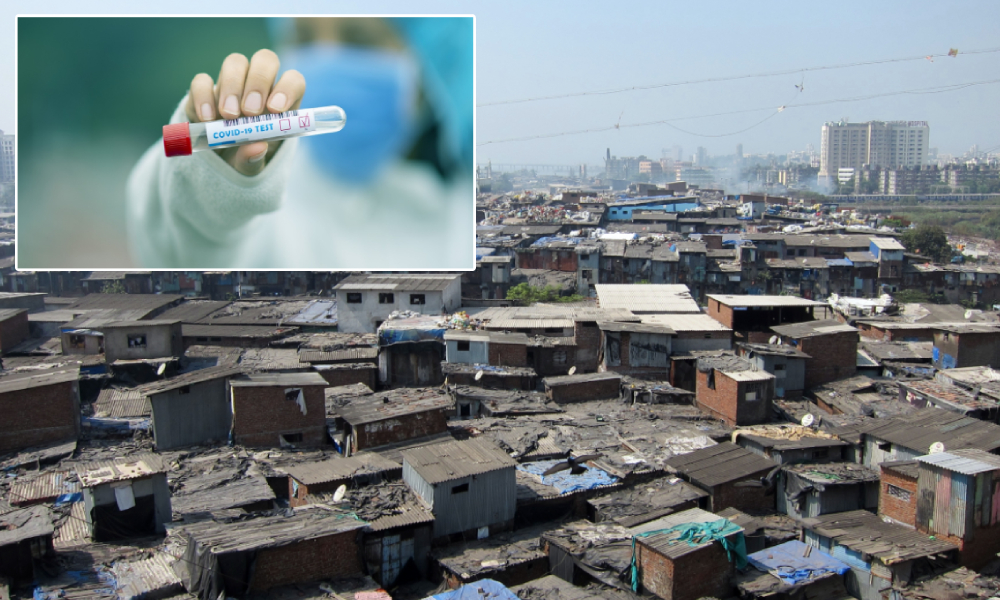
Image Credits: Wikipedia
Mumbai: Dharavi Reports Zero Case For First Time Since Second Wave Of COVID
Writer: Prattusa Mallik
A student of Journalism and Audio-Visual Communication, interested in words and silences alike, I aim to bring the narratives of the periphery to the centre, one story at a time. When not working, I'm usually caught reading, thinking, writing, watching Friends, or stargazing.
Maharashtra, 15 Jun 2021 12:42 PM GMT
Editor : Ankita Singh |
A literature lover who likes delving deeper into a wide range of societal issues and expresses her opinions about the same. Keeps looking for best-read recommendations while enjoying her coffee and tea.
Creatives : Prattusa Mallik
A student of Journalism and Audio-Visual Communication, interested in words and silences alike, I aim to bring the narratives of the periphery to the centre, one story at a time. When not working, I'm usually caught reading, thinking, writing, watching Friends, or stargazing.
Considered one of the densest settlements in the world, Dharavi reported no new cases for the first time since the second wave of the pandemic began.
Dharavi, Asia's largest slum colony in Mumbai, has not reported any new Covid-19 cases since Monday. The last time the area had reported zero positive cases was on February 2, just before the second wave of the pandemic had hit the country.
Currently, there are 13 active cases, out of which four people are hospitalised, three are in Covid-care centres, and six are quarantined at home.
Situation During Second Wave
According to the data by Brihanmumbai Municipal Corporation (BMC), the slum has reported 6,861 infections and 359 deaths since conforming to the first positive case on April 1, 2020. Out of these, 2931 infections and 47 deaths were reported since February 1 this year.
After recording no new cases on February 2, the infection rates again began to surge in the area, owing to the second wave. It reached its peak between March and April, recording an average of 70-90 cases daily. By March 23, alone for the residents of Dharavi, the civic corporation was compelled to start two additional quarantine centres after the first 250-bed centre was occupied fully. On April 8, Dharavi reported 99 new cases—its highest in one day.
Decline In Cases
However, since May 10, the has been a drop in cases. After May 26, fewer than 26 cases have been reported. Following this, BMC has shut down its quarantine centres in Dharavi. Only a community centre turned quarantine facility is open in Dadar.
Kiran Dighavkar, Assistant Municipal Commissioner of BMC G North ward, said that the second wave could not hit Dharavi as hard as the other slum areas in Mumbai.
"However, we were taking all steps from our side as aggressively testing to ensure any positive case is isolated as soon as possible," he said as reported by The Times of India.
Reasons For Decline
Officials have stated that till Monday, 23,000 people have been vaccinated in the Dharavi area. On March 22, a vaccination centre at the Chhota Sion Hospital in Dharavi was opened.
It increased the vaccination rate many folds, going up to 600 vaccinations on May 6. However, many slum residents would not be able to afford to get vaccinated at private vaccination centres.
A measure that might have led to the dip in cases was the ward officer's decision to close down all the fever clinics in the area. Due to this, the residents of the slum were isolated from others in the vicinity.
The Dadar and Mahim areas of Mumbai have also recorded a significant decline in infection rates. Dadar reported only three new cases in 24 hours out of the 15 789 active cases in the city.
Also read: Single Dose Jab May Be Sufficient For People Who Have Recovered From Mild COVID: Study
 All section
All section














